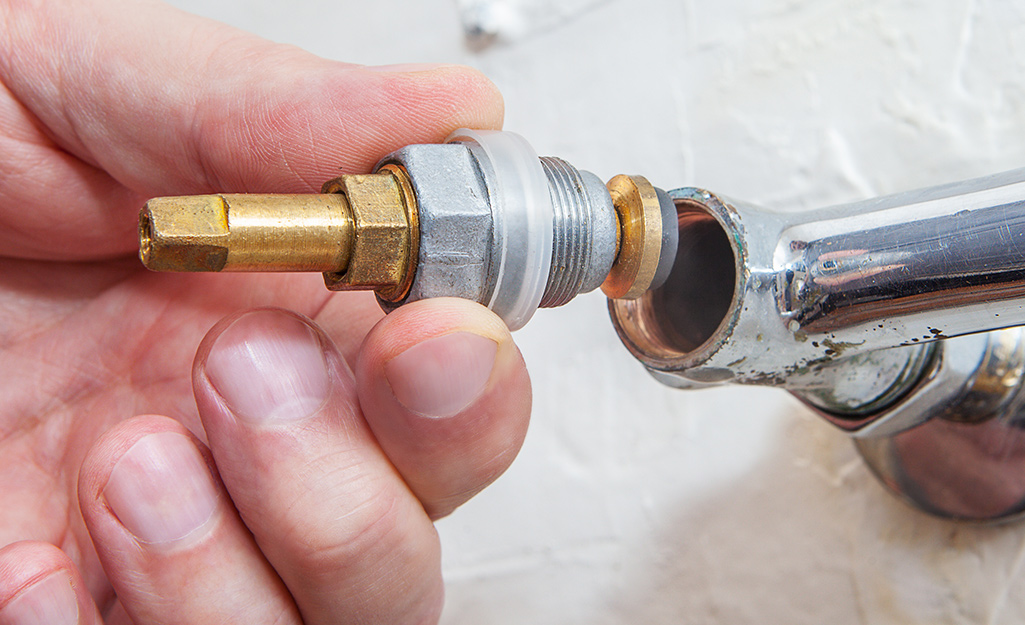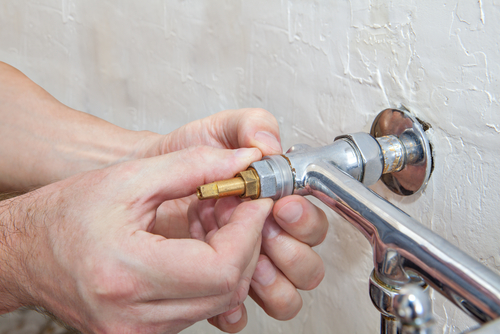The content directly below pertaining to Why Are My Faucets Dripping (And Can I Fix It Myself)? is totally stimulating. Check it out for your own benefit and decide what you think of it.

Dripping taps may appear like a minor trouble, yet their effect exceeds simply the nuisance of the sound. From drainage to incurring unnecessary economic costs and wellness threats, overlooking a leaking faucet can bring about various consequences. In this write-up, we'll look into why it's essential to address this typical home concern immediately and effectively.
Waste of Water
Ecological Influence
Leaking faucets add considerably to water waste. According to the Epa (EPA), a solitary tap dripping at one drip per secondly can lose more than 3,000 gallons of water per year. This not only stress water sources yet likewise affects ecosystems and wild animals dependent on them.
Financial Costs
Raised Water Expenses
Past the environmental impact, trickling taps can inflate water bills substantially. The built up wastage gradually converts right into greater utility expenditures, which could have been prevented with timely repair services.
Possible Residential Property Damages
In addition, prolonged trickling can cause harm to fixtures and surfaces bordering the tap. Water buildup can create discoloration, rust, and also structural concerns if left neglected, causing extra fixing prices.
Health Concerns
Mold And Mildew and Mildew Development
The continuous visibility of moisture from a leaking tap creates a perfect environment for mold and mildew growth. These fungi not only compromise indoor air top quality but also present health dangers, especially for individuals with respiratory system problems or allergies.
Waterborne Diseases
Stagnant water in leaking taps can become a breeding ground for microorganisms and various other pathogens, enhancing the risk of waterborne diseases. Contaminants such as Legionella bacteria thrive in stationary water, potentially causing serious illnesses when ingested or breathed in.
DIY vs. Professional Repair
Pros and Cons of Do It Yourself Repair
While some might attempt to fix a trickling tap themselves, DIY repair work come with their very own collection of difficulties. Without proper expertise and tools, do it yourself efforts can aggravate the problem or lead to incomplete repair services, extending the trouble.
Advantages of Working With a Specialist Plumber
Working with an expert plumber ensures that the underlying root cause of the dripping tap is addressed properly. Plumbing technicians have the knowledge and tools to identify and fix tap issues effectively, saving time and lessening the danger of more damages.
Step-by-Step Guide to Dealing With a Dripping Tap
Tools Needed
Prior to trying to deal with a leaking tap, collect the required devices, consisting of a flexible wrench, screwdrivers, replacement components (such as washing machines or cartridges), and plumber's tape.
Common Tap Issues and Their Solutions
Identify the kind of faucet and the specific concern triggering the drip. Typical problems consist of worn-out washing machines, rusty shutoff seats, or faulty O-rings. Describe producer guidelines or on-line tutorials for detailed support on repair work.
Safety nets
Routine Upkeep Tips
To stop dripping taps, perform regular maintenance such as cleaning aerators, examining for leaks, and changing worn-out components immediately. In addition, think about mounting water-saving gadgets or updating to extra efficient components.
Significance of Prompt Repairs
Dealing with leaking taps as soon as they're discovered protects against more water waste and potential damages, inevitably saving both water and cash over time.
Influence On Residential Property Worth
Assumption of Well-Maintained Building
Preserving a residential or commercial property in good condition, consisting of addressing maintenance concerns like trickling faucets, enhances its regarded worth and charm amongst prospective customers or lessees.
Impact on Resale Worth
Features with well-maintained plumbing components, including taps, command greater resale values in the real estate market. Resolving trickling faucets can contribute to a favorable perception throughout property evaluations and settlements.
Environmental Obligation
Private Contribution to Conservation
Taking obligation for repairing trickling faucets aligns with more comprehensive efforts towards water preservation and environmental sustainability. Every individual's activities jointly make a significant effect on maintaining priceless sources.
Sustainable Living Practices
By prioritizing timely repair services and adopting water-saving practices, people add to lasting living practices that benefit both existing and future generations.
Final thought
Dealing with a dripping faucet goes beyond mere benefit; it's a vital action towards conserving water, lowering financial prices, and guarding health and residential or commercial property. Whether via DIY repairs or expert aid, taking action to deal with dripping taps is a little yet impactful means to promote responsible stewardship of sources and contribute to a much healthier, more sustainable future.
How to Fix a Leaky Faucet: Step-by-Step Repair Guide
A leaky faucet may seem like a simple annoyance, but if it's not fixed promptly, that leak could cost hundreds to potentially thousands. From water damage to mold, mildew, and high water bills, even a tiny leak can be catastrophic if left unattended. Damage like this can even affect the overall value of your home, so it's important to take the right approach for leaky faucet repair. You may need the help of a plumber in some cases, but we've got a few tips you can try on how to fix a leaky faucet before calling the pros.
Four Faucet Types
When you're learning how to fix a leaky faucet, the first step is knowing what kind of faucet you're working with! There are four common types.
Cartridge Faucets
Cartridge faucets come in one- or two-handled varieties. In one-handled cartridge faucets, hot and cold water combines in a single cartridge. In the two-handled versions, hot and cold water are controlled separately and mixed in the faucet.
Ball Faucets
Ball faucets have a single lever you push up and down to adjust the pressure and rotate to change the temperature. A slotted metal ball controls the amount of water allowed into the spout.
Compression Washer Faucets
They're the oldest type of faucet, but they're still used in many homes — especially older ones. Compression faucets have two separate handles that, when turned, raise or lower the washer that seals a water valve. This valve stops water from flowing through the faucet when it is turned off.
Disc Faucets
Disc faucets rarely need to be repaired due to their maintenance-free design. The water flow is controlled by two discs — the upper one raises and lowers against a fixed lower disc, creating a watertight seal. If your disc faucet starts leaking, you may need to replace the seals or clean residue buildup from the inlets.
Fixing a Leaky Faucet
Step 1: Turn Off the Water
Whether you're learning how to fix a leaky bathtub faucet or how to fix a leaky kitchen faucet, always turn off the water supply to your working area when you're fixing a leak. The last thing you want is a flood added to your list of things to fix.
Look for the shutoff valves below your sink or around the tub and turn them clockwise to stop the water flow. If your faucet doesn't have shutoff valves, you may need to turn off the water for the whole house. Check to make sure it's off by turning the faucet on. If nothing comes out, you're ready to start the repair.
Step 2: Take Apart the Faucet
How you disassemble your faucet depends on the type of fixture you have. You can use a flathead screwdriver to remove the caps on top of the handle or handles for cartridge and compression faucets. Inside, you should see handle screws. Unscrew these with a screwdriver to remove the handle.
Disc- and ball-style faucets will typically have an inlet screw near the handle, and removing that will reveal the interior of the faucet.
Detach the Valve Stem
For cartridge- and compression-style faucets, you'll see the inner valve stem or cartridge once you remove the faucet handles. If you have a compression faucet, unscrew the brass valve stem. If you have a cartridge faucet, pull out the cartridge. If your cartridge has been in place for a while, it may require some tools or extra force to remove it due to mineral deposits.
Examine and Replace Parts
Once you've removed the parts, check them out to confirm what needs to be replaced. You may see corroded rubber washers, O-rings, stems, or cartridges. On a ball-style faucet, check the seats and springs for damage.
If you need to repair a leaky disc faucet, check the inlet and seals on the lower disc.
Once you determine what parts must be replaced, visit your local hardware store. Bring the damaged parts with you to ensure you can purchase the correct components to replace them.
Clean Valves and Faucet Cavity
If you've removed a stem or cartridge, you may notice mineral buildup in the faucet's threads. Use white vinegar to clean the valve seat by soaking it for a few minutes, then scrub it away with a soft toothbrush and rinse with warm water. You can also clean the interior of the faucet in the same way.
Reassemble the Faucet
Once your faucet is cleaned and the required parts have been replaced, it's time to reassemble it. Put the pieces back together and slowly turn the water supply back on. Doing this slowly is crucial because too much initial water pressure can damage the new hardware you've just installed.
https://homewarranty.firstam.com/blog/how-to-fix-leaky-faucet

Do you enjoy more info about Should I Repair or Replace a Leaky Faucet?? Leave a short review directly below. We would be pleased to know your feelings about this piece. In hopes to see you back again soon. Enjoyed reading our blog entry? Please share it. Let other people discover it. We recognize the value of reading our article about Should I Repair or Replace a Leaky Faucet?.
Comments on “What It's Needed to Fix a Malfunctioning Faucet”